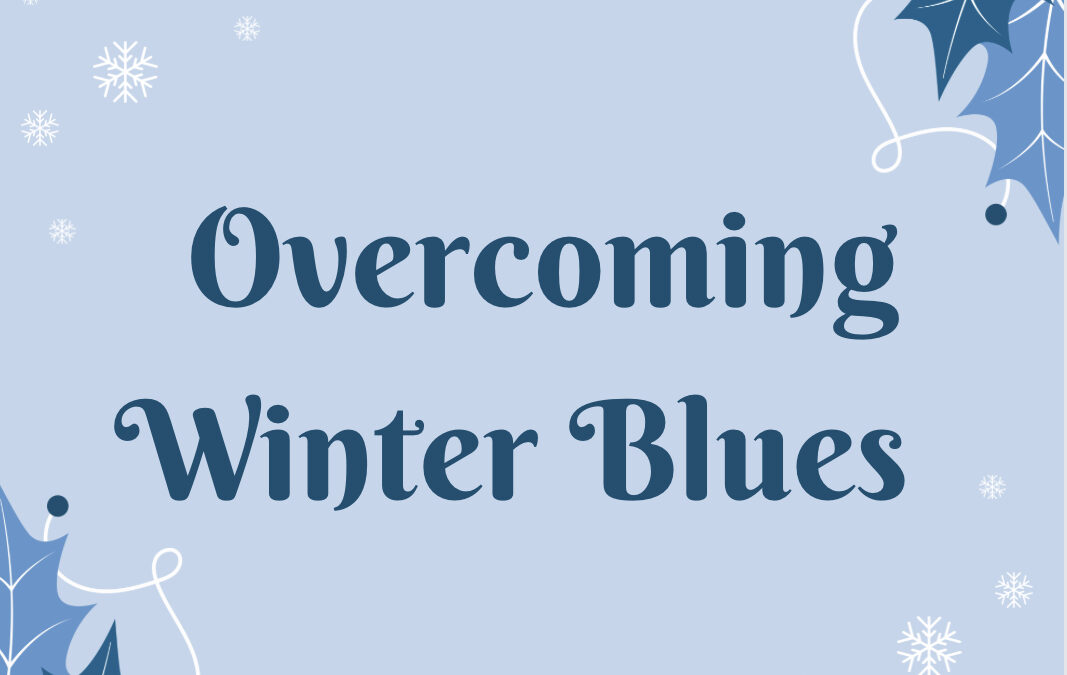With less sunlight during the day in the winter, it is no surprise that many of us spend more time indoors this time of year. Less sunlight can have an impact on our mood because natural light plays a critical role in regulating our body’s internal clock, also known as our circadian rhythm. When we are exposed to sunlight it triggers a response in our body to create the neurotransmitter serotonin, our “feel-good” hormone; less sunlight can disrupt this process and potentially lead to changes in our mood.
Feeling the urge to sleep more or struggling to find motivation for daily tasks is entirely common during this time of year and can be partly attributed to the seasonal changes affecting our energy levels and motivation. As we navigate the shorter days with reduced sunlight, it’s essential to understand how these seasonal changes can impact our wellbeing.
To start, let’s define what seasonal depression is. Seasonal depression also known as seasonal affective disorder (SAD), is a type of depression that occurs at certain times of the year specifically during the fall and winter months when there is less natural daylight [1]. Seasonal depression may manifest with symptoms like low energy, mood changes, irritability and low motivation. Seasonal depression is a term used to describe one particular state within a broader spectrum of depression disorders that, while distinct from the occasional winter blues, may still share overlapping symptoms. Navigating seasonal depression or the winter blues encourages us to lean on various strategies for self-care and wellbeing. If you are struggling, particularly during the winter months, here are a few for you to consider:
- Be kind to yourself; embrace the coziness
This is a reminder for every day but especially if you are feeling low during the winter months, it’s important to practice self-compassion. Be kind to yourself by allowing and accepting the slower pace your body and mind are craving. Biologically speaking, we are animals just like bears, both belonging to the kingdom Animalia. This classification is based on shared traits like multicellularity, movement, and the need for food and oxygen. So, if your body is signaling a need to move towards a more hibernation-like state, it’s a natural response akin to our fellow animals in nature [2]. Embrace the moments of relaxation, indulge in comforting activities like reading a book or enjoying a warm cup of tea. Recognizing and accepting that it’s okay to slow down and savor these moments can contribute to a more positive mindset during the darker, colder days. - Bright light or Phototherapy
Incorporating bright light exposure into your daily routine can impact seasonal depression symptoms. Spend time in well-lit spaces, open curtains to let natural light into your home, and consider using light therapy lamps that simulate sunlight. Exposure to bright indoor light helps regulate the body’s circadian rhythm and may contribute to improved mood and energy levels. Here are some examples of lights. - Get outside, breath in the fresh air
Even in colder weather, spending time outdoors can have a positive effect on mood. Spending even just 10 minutes outside, breathing in the fresh air can help boost endorphin levels and provide a change in scenery to uplift one’s mood. Whether it’s a short walk in the neighborhood or a longer planned winter hike at a park or local mountain, getting outside and moving your body can help regulate the body and mind.
These strategies offer support for managing seasonal depression symptoms but it is also crucial to recognize that you are not alone in facing challenges. Just as the seasons change, our emotions are dynamic, resembling waves in the ocean. Remember that if you find yourself deeply struggling with your mental health, seeking the guidance of a mental health professional can be a valuable step toward understanding and managing your emotions effectively.
Elena Palermo (she/her) is a graduate therapist at the Hope Center for Wellness. She is a first-year graduate clinical social work student at Smith College School of Social Work. Her career therapeutic aspirations include interlacing mindfulness-based interventions into a psychodynamic framework.
References
[1] American Psychiatric Association. (2013). Diagnostic and Statistical Manual of Mental Disorders (5th ed.)*. American Psychiatric Publishing. This manual defines and describes the criteria for Seasonal Affective Disorder (SAD), including its occurrence and symptomatic manifestations.
[2] Campbell, N. A., & Reece, J. B. (2005). Biology (7th ed.). Pearson Education, Inc. This text discusses the biological classification of animals, including humans, within the kingdom Animalia, highlighting shared characteristics among diverse species.

